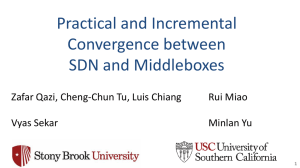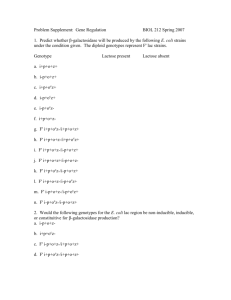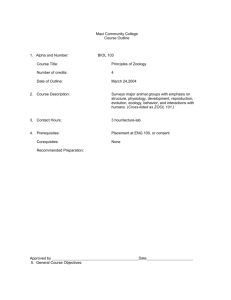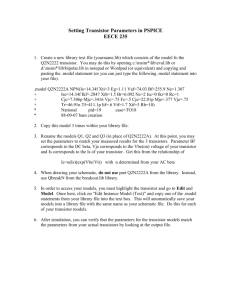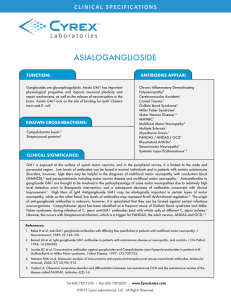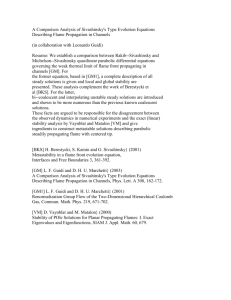Homework #3 Derivations: Please derive Equation 3.109 from the
advertisement
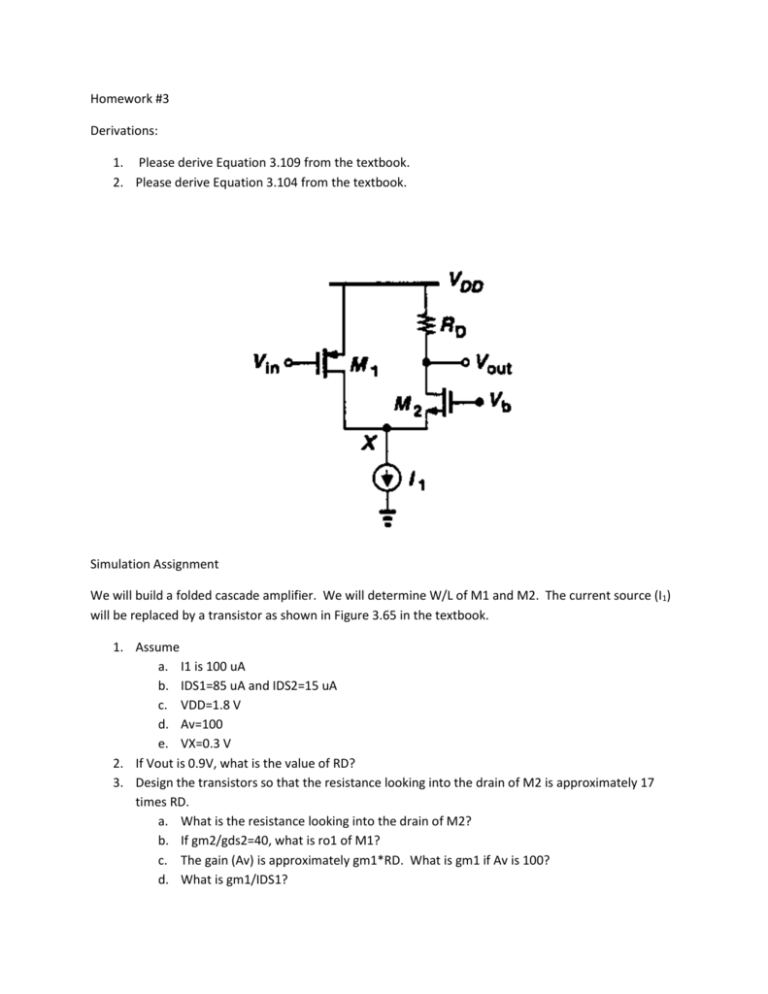
Homework #3 Derivations: 1. Please derive Equation 3.109 from the textbook. 2. Please derive Equation 3.104 from the textbook. Simulation Assignment We will build a folded cascade amplifier. We will determine W/L of M1 and M2. The current source (I1) will be replaced by a transistor as shown in Figure 3.65 in the textbook. 1. Assume a. I1 is 100 uA b. IDS1=85 uA and IDS2=15 uA c. VDD=1.8 V d. Av=100 e. VX=0.3 V 2. If Vout is 0.9V, what is the value of RD? 3. Design the transistors so that the resistance looking into the drain of M2 is approximately 17 times RD. a. What is the resistance looking into the drain of M2? b. If gm2/gds2=40, what is ro1 of M1? c. The gain (Av) is approximately gm1*RD. What is gm1 if Av is 100? d. What is gm1/IDS1? 4. Let’s focus on designing M1. a. Let’s obtain some more information about a PMOS transistor. Let’s run a simple simulation assuming that i. VX =0.3, VS=1.8V, VG=0.9V. ii. W/L=18um/0.18um b. What is the threshold voltage of M1 (or MP1 in the figure)? c. Since gm1/ids1=2/|(vsg1-vth1)|, we can estimate vsg1 now that vth1 and gm1/ids1 are known. What is vg1? d. Rerun the simulation using vg1 from the previous step? What is gm1/ids1 from the simulation? Adjust vg1 until you get the gmoverid1 ratio determined from 3(d). What is the final vg1? e. Rerun the simulation using the vg1 from the previous step. Determine the current density by calculating IDS1/W1. f. Using the current density from the previous step, what is the width you need in order to in order to achieve 85 uA? W1=IDS1/(Current Density) g. Rerun simulation using the width from the previous step. Verify that IDS1 is approximately 85 uA. h. What is gm1? i. What is gds1? j. What is ro1? 5. Let’s focus on the design M2 a. Let’s obtain some more information about an NMOS transistor. Let’s run a simple simulation assuming that i. Vout =0.9, VX=0.3V, VG=0.9V and VB=0 ii. W/L=18um/0.18um b. What is gm2/gds2? c. Adjust the length of M2 in order to achieve gm2/gds2=40. Gm2/gds2 ratio can be increased by increasing the length. What is the length of M2? d. What is the current density? e. What is the size of M2 in order to get an IDS2 of 15 uA? f. What is the current of M2? g. What is the gm2/ids2? h. What is the gm2/gds2? 6. Next will replace the ideal current source in Figure 3.63(b) by a transistor (M3) as shown in Figure 3.65. a. VDS3 should be 300 mV. IDS3 should be 100uA. b. Assume that the length of M3 is 1.0um and the width is 10.0um. c. Assume that vgs3 is initially 0.6V. d. In order to have a much larger ro3, gds3 should be about 1/10 of gds2. What is the maximum value of gds3? e. What is gds3/ids3? f. Since gds3/ids3=gm3/ids3/(gm3/gds3), it will be desirable to have a small gm3/ids3. g. Adjust vg3 until gm3/ids3 is 5. (704uS/136uA) What is vg3 at this point? h. What is the current density at this point? i. What should be the value of W3 in order to achieve 100 uA? 7. Implement the entire folded cascade. a. Sweep the DC gate voltage of M3 (the transistor implementation of I1) until I1 is approximately 100 uA. b. Sweep the DC gate voltage of M1 until it is approximately 85 uA. c. Sweep the DC gate voltage of M2 until it is approximately 15 uA 8. Test the amplifier by a 10 uV sine wave. And observe the amplitude of the output wavefrom. a. Are you able to predict the gain of using small signal parameters obtain from the DC simulation?

